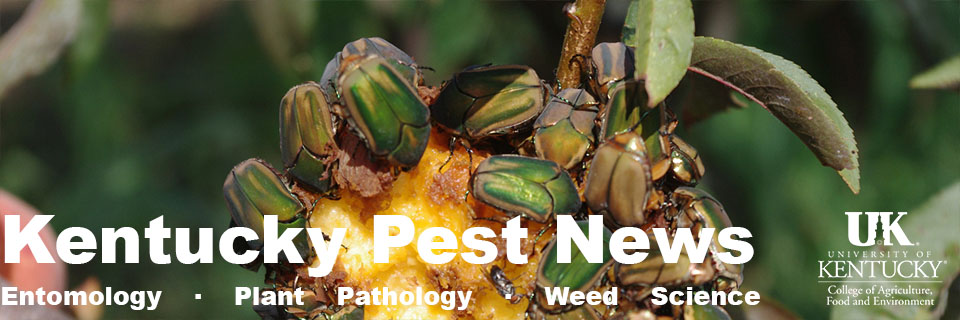There have been several reports of thrips on high tunnel vegetables this past week. As thrips feed on developing tissues in the bud of the seedlings, infested plants often display distorted new growth emerging from the growing point. Ideally, producers…
Blog Archives
Cleaning and Sanitizing Commercial Greenhouse Surfaces
Sanitizing surfaces is a critical step for greenhouse and nursery sanitation. This is particularly important for sites where disease was a problem in previous crops. Pathogens that cause plant disease can survive in debris, in soil, or on surfaces. Cleaning…
Beginning Farmer High Tunnel Production Basics
Join University of Kentucky Extension Specialists for a two-part webinar series followed by an in-person training. Webinars Webinar 1 will be presented by UK Extension Specialists Rachel Rudolph and Jonathan Larson on March 23 from 12:00 – 1:30 pm (Eastern…
Using Sticky Cards in High Tunnels
High tunnels are wonderful tools for extending the growing seasons but they can also be houses for multiple types of insect and mite pests. Monitoring for these pests is highly recommended in order to intercept their populations before they are…
Got Aphids? Do Weed Control!
Aphids are getting going in many high tunnels and greenhouses across the state. These small, sap sucking menaces can be quite sneaky when it comes to establishing their population, and once their numbers are high, they can be tough to…
Survey to Gauge Willingness to Use Row Covers to Manage Pests
The University of Kentucky, in cooperation with Iowa State University, Current Cucurbit, Cornell AgriTech, and USDA-NIFA, is conducting a survey to learn about grower experiences using row covers and their willingness to adopt a new row cover approach known as…
Cucurbit Mesotunnel Research Blog: How Details Matter
Dr. Dave Gonthier posted an article on the Cucurbit Mesotunnel Blog discussing how finer details may improve the success of this system. We have been researching improved conventional and organic control strategies for cucurbit pests and diseases for more than…
Meso-Tunnels and Cucurbit Production
If you’re a vegetable grower, you’re probably familiar with high tunnels and low tunnels. But what are meso-tunnels? Each of these tunnel types are used to create a protective barrier between crops and the environment. “Meso” means “middle,” so meso-tunnels…
Wicked Whiteflies
As the name whitefly suggests, they are white, and they do fly, but they aren’t technically flies! Whiteflies are closely related to aphids, cicadas, and scale insects–the true bugs, or Hemipterans–not flies. These tiny pests are usually around 1/16 to…
Aphids Common in High Tunnels and Fields
A number of aphid species are now common and attacking various crops in high tunnels, as well as vegetables in the field. Aphids (Figure 1) feed with piercing-sucking mouthparts and produce large amounts of honeydew, possibly resulting in the growth…
Biological Pest Management in Kentucky High Tunnel / Greenhouse Tomato Production Systems
Kentucky producers of tomatoes in high tunnel or greenhouse production systems manage several key arthropod pests to maximize their yields and profits. An environmentally and economically sound management system for these pests is based on the following components: Sanitation and…
Clean Up High Tunnels Now to Reduce Veggie Disease Next Year
Numerous important diseases of vegetables can overwinter more effectively in protected environments like greenhouses and high tunnels, as compared to field environments. These include foliar diseases like leaf mold, gray mold, and powdery mildews. In addition, soilborne diseases, like root…
Watch for Thrips — They’re Abundant this Year
There have been several reports of high thrips populations attacking crops and bothering homeowners alike this spring (see KPN June 5, 2018, Thrips Can Be Cause of “Mystery Bites” and “Pool Miseries”). Despite their tiny size, various thrips species are…
Vegetable and Tobacco Diseases to Scout for: Botrytis Gray Mold
Kentucky vegetable and tobacco growers should be on the lookout for Botrytis gray mold. This disease may occur in fields under humid conditions, but it is most common in greenhouses and high tunnels. Botrytis gray mold can also affect numerous…
Watch for Mites in High Tunnels
There have been several reports of spider mites on high tunnel tomatoes this past week. This coincides with the onset of some much-needed warmer weather in the Commonwealth. Generally, higher levels of mites are more common with warmer weather. Ideally,…
